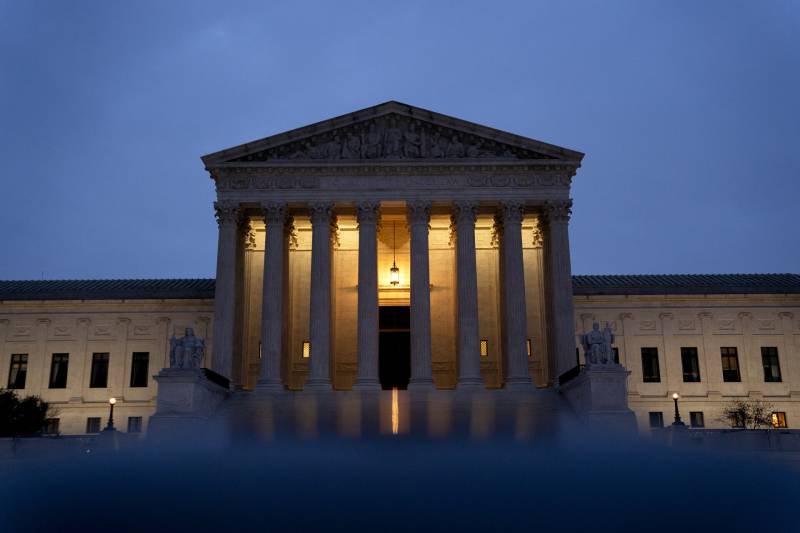Controversial decisions by the Supreme Court in late June have dealt a blow to programs aimed at increasing racial diversity in college admissions, LGBTQ+ rights and the ability of 43 million Americans to get some relief from their student loan debt — all a year after the high court overturned Roe v. Wade, eliminating the constitutional right to an abortion in the United States and leading to a flood of abortion restrictions and bans across the country.
The recent slew of decisions prompted a wave of criticism from liberals and supporters of diversity in higher education and the workplace — including Representative Barbara Lee (D-Calif.), who called the Supreme Court a “corrupt, right-wing court” — and reignited long-standing calls for reforming the judicial branch.
California Representative Ro Khanna (D-Fremont) led the call by reintroducing the Supreme Court Term Limits and Regular Appointments Act on June 30, specifically prompted by the Supreme Court’s decision that blocked the Biden administration’s plan to forgive student loan debt.
Taking aim at the current lifetime tenure of Supreme Court justices, Khanna’s bill aims to enact 18-year term limits for the justices and to “stop extreme partisanship” in a court he described as “regressive.”
However, congressional reforms to the Supreme Court — called the least accountable branch of the United States’ government by nonpartisan advocacy group Fix the Court — is an uphill climb, given Republican control of the House and the reluctance of even some Democrats (and independents like Sen. Kyrsten Sinema) to tamper with Supreme Court policies.
Keep reading for what to know about Khanna’s bill, its possible chances of success and what to know about reforming the Supreme Court.
Why don’t Supreme Court justices have term limits? Do other countries do this?
The Constitution says that Supreme Court justices “shall hold their Offices during good Behaviour,” meaning they have a lifetime tenure “as long as they choose and can only be removed from office by impeachment.” For example, former Justice Stephen G. Breyer retired at 83 last June, and had been on the Supreme Court since 1994. Ruth Bader Ginberg died at 87 in 2020, after serving for 27 years.
This is all according to Article III of the U.S. Constitution. And in drafting the Constitution, the framers harkened back to experiences with England and erratic decision-making from monarchs — according to Gabe Roth, executive director of Fix the Court, which advocates for non-ideological “fixes” that would make the Supreme Court more accountable. (Roth says he’s discussed the term limits bill with Khanna for years, and was part of the recent reintroduction announcement.)
Roth explains that in the late 1700s, King George III himself was firing judges in United States colonies — which prompted state courts to write their own constitutions to say judges can hold their offices during good behavior. This line was then adopted in the U.S. Constitution.
“The U.S. is really different from other countries,” said Roth, “because our Constitution is so old, and it traces its roots to the 1700s.” The roots of our current Supreme Court situation lie, says Roth, with government dysfunction in England and this growing conflict between King George and the colonies. “And that’s — to me — not a great reason to maintain the practice of life tenure,” he said.
Roth notes that “most countries have a mandatory retirement age or a retention election or a term limit or some combination thereof.” For example, the retirement age in Brazil, Canada and the United Kingdom is 75. In South Africa (PDF), it’s 70. And in Germany, it is 68 years old.
Other democracies have reflections of increased life expectancy in the modern age and accumulation of power by judges, and needed ways to reduce those things by instituting term limits or mandatory retirement ages.
In contrast to the Supreme Court, almost all U.S. states have a mandatory retirement age or retention election or term limit for its state court judges. “So the U.S. is not only an outlier globally — it’s an outlier within the various systems of the judiciary that are set up within the [U.S.],” Roth said.

So, can a Supreme Court justice be impeached?
Yes — but only one justice has ever been impeached.
In 1805, the justice in question, Samuel Chase, was under fire for partisan leanings but was acquitted by the Senate. So he was never removed from office.
More recently, in 1965, Abe Fortas was a justice appointed by President Lyndon B. Johnson. In the following years, Fortas was accused of accepting money from a financier and resigned in 1969.
Impeaching a Supreme Court justice, said Roth, is “the same process as impeaching and removing a president.”
“We need a majority of the House to impeach, which is like an indictment, essentially. And you need two-thirds of the Senate to vote to remove,” Roth explained.
“The lower court judges have been removed via impeachment for things like taking bribes or acting erratically in the courtroom,” he said. “But just given how partisan our country and our House and Senate are, I think it would be very difficult in the Senate … to get 67 senators to agree on anything, let alone removing a Supreme Court justice.”
“The way that Supreme Court justices are going to leave the court, I think it’s going to be mostly death or retirement and old age,” he said.
Who is on the Supreme Court now?
There are nine justices on the Supreme Court, most of whom were appointed by Republican presidents — one from George H.W. Bush, two from George W. Bush and three from Donald Trump. These justices are, in order of appointment, John Roberts, Clarence Thomas, Samuel Alito, Sonia Sotomayor, Elena Kagan, Neil Gorsuch, Brett Kavanaugh, Amy Coney Barrett and Ketanji Brown Jackson.
The Court recently has also been facing controversies outside of its recent rulings. A series of investigations from ProPublica, a nonprofit, non-partisan news organization, found conflicts of interest among several conservative justices who took lavish gifts from conservative activist donors. The articles specifically highlighted Clarence Thomas and Samuel Alito.

